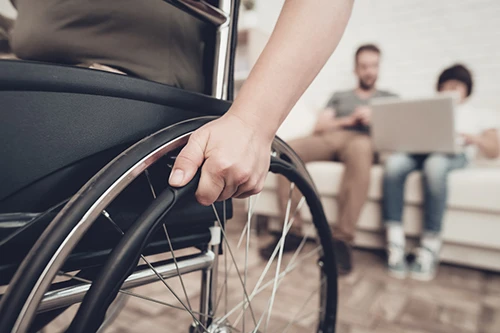One of a parent’s worst nightmares is a child being injured, especially in a car accident. Unfortunately, car accidents are very much a reality in the US, with 612 children under the age of 13 killed in motor vehicle accidents in 2019 alone, according to the Insurance Institute for Highway Safety.
However, you can be proactive in protecting your child from injury in a car accident. Below you’ll learn of ways to minimize the risk of serious injuries in a motor vehicle accident.
Types of injuries a child can suffer in a car accident
Children’s accident-related injuries can vary due to age. For children under 12 months, concussions are the most common type of motor vehicle-related accident injuries, whereas children over that age are more likely to suffer from lacerations, bruises, broken bones, or fractures.
Other injuries children may suffer include:
- Traumatic brain injury (TBI)
- Fracturing
- Hemorrhaging
- Lung injuries
- Other internal organ injuries and bleeding
- Broken bones
- Spinal cord injuries
Protecting your child from injuries in a car accident
Here are just some of the ways to protect your child from injuries in a motor vehicle accident:
Secure your child in the back seat. Any child up to 13 years old should sit in the back seat of the vehicle because their size impacts the severity of the injury potentially sustained. While airbags are considered safe for most people, they can be inherently dangerous for children, as the impact of an airbag once deployed is strong enough to injure a child.
Use an appropriate car seat. Always follow the car seat manufacturer’s guidelines. Choose a rear-facing car seat for infants and toddlers because they are more susceptible to spinal cord injuries. Children who have outgrown the rear-facing weight or height limit should use a forward-facing car seat. Place the chest clip of the car seat at your child’s armpit level and ensure the seat belt is properly used. Never buy a secondhand car seat.
Use a booster seat. All children whose weight or height exceeds the forward-facing limit for their car seat manufacturer should use a belt-positioning booster seat until the vehicle seat belt fits them properly.
Check the car seat for wear and tear. The car seat should be replaced every 5 years or after a car accident. Even if it’s not time to replace the car seat, always be sure to check for damage or wear and tear. Never have a child sit in a damaged seat, as the car seat wouldn’t be able to properly secure the child.
Read the instructions for both the car seat and your vehicle. This way, you’ll know exactly how to set up your child’s car seat to minimize any injuries that could happen to your child in a car accident.
Keep your children occupied. Play car games, give them a tablet, or even hook up a video player or game console to the backseat area. However, if your child is resistant, safely stop on the side of the road and take that opportunity for your child to calm.
Set a good example for your child. This includes wearing seatbelts, properly sitting in your seat, and other actions that could influence your child’s behavior.
What to do after a car accident
If you are involved in a motor vehicle accident, take your child to the emergency room or a physician immediately to treat any injuries. Consult with a personal injury attorney if you or your child have been harmed in a car accident.
You’ll likely need to pay for medical bills, therapy, and more for your child. Potentially, lifelong care may be needed. A personal injury attorney will fight for you, so you’ll get the compensation you deserve for damages, including:
- decreased quality of life for the entire family
- lost time and wages
- pain and suffering
- medical bills
BE SAFE!
Every year, hundreds of children are fatally injured in car accidents. However, you can greatly lower the chance of death or severe injury by being proactive about safety. Always secure your child in the back seat. Follow car seat manufacturer’s guidelines regarding the appropriate car seat for your child as well as all safety precautions. Finally, set a good example for your child by practicing good seating behaviors.



